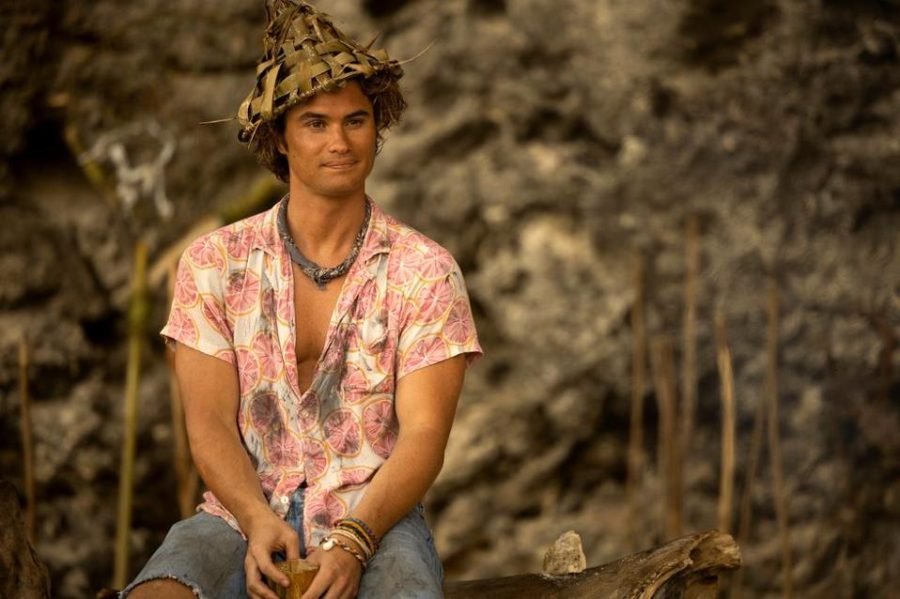Review: Season three of ‘Outer Banks’ strays from its initial lore
Chase Stokes plays John B in “Outer Banks.” The hit Netflix series known for its fun beach vibes and teenage drama returned Feb. 23. Photo courtesy Netflix.
March 14, 2023
“Outer Banks” is back with its third season, but it’s not quite the same show that once captivated audiences.
The hit Netflix series known for its fun beach vibes and teenage drama returned Feb. 23. It initially achieved widespread success at the peak of the pandemic in April 2020, giving viewers a reminder of the hangouts and summer activities everyone was missing. Now, season three more closely resembles the plot of an “Indiana Jones” adventure film than the “Outer Banks” viewers know and love.
The first two seasons of the show follow the drama and antics between two groups of teenagers living off the coast of North Carolina: the elite, upper class “Kooks” and the working class “Pogues.” Filled with tension, love stories and plot twists, the story of the Kooks and Pogues felt relatable — something that cannot be said of its latest outing.
Season three opens with the Pogues stranded on a small, deserted island, “Poguelandia,” where they were left at the end of season two after narrowly escaping murder aboard a cargo ship while trying to save the Cross of Santo Domingo. After being rescued, escaping a plane crash and stealing a yacht, the Pogues’ story moves back to the Outer Banks.
Ironically though, the Pogues’ trendy, tropical clothing is awfully well-maintained for having been stranded on a deserted island for about a month. With their clothes intact, barely any dirt on them and their faces shaven, the Pogues’ stay on Poguelandia is pretty unconvincing. Unfortunately, the plot discontinuities are not limited to this instance.
This season primarily follows the storyline between John B (Chase Stokes) and his father Big John (Charles Halford), who was presumed dead in the previous seasons. There are wholesome father-son interactions between the two as they reunite to finish Big John’s lifelong goal of solving the 500-year-old mystery of the El Dorado gold with the help of the other Pogues. These sweet moments, though, are often overshadowed by cliché dialogue or interrupted by someone almost being killed.
The action-filled scenes of the Pogues escaping near-death scenarios and outsmarting hitmen become repetitive and often predictable after the second episode. The constant encounters with the police or Carlos Singh (Andy McQueen), the Pogues’ newest enemy in their quest for the El Dorado gold, are unnatural and frustrating. These scenes shroud much of the initial charm of the show — any glimpse of the Kooks’ and Pogues’ “normal” lives on the Outer Banks has become a welcome surprise.
The poor use of stunt doubles coupled with editing failures resulted in various memes and Tik Toks following the season’s release. In one instance, Rafe Cameron (Drew Starkey) and Kiara Carerra (Madison Bailey) attempt to escape from being held hostage by Singh in exchange for Denmark Tanny’s diary, a clue to the El Dorado gold. As Rafe and Kiara jump into the back of a truck to escape the compound, Rafe, who sports a buzz cut this season, is momentarily replaced by a stunt double with a full head of hair. This, among other noticeable mistakes, is an embarrassing moment for the $50 million budget this season.
The show, although different from the “Outer Banks” of seasons prior, is beginning to stretch its audience: What was once a teenage drama with a side of action is now action-packed with a side of drama. Yet, the renewal of the show for a fourth season before the airing of the third season proves “Outer Banks” has not lost all hope.
Viewers can only hope that some of the “Outer Banks” charm returns in season four as the Pogues set off on yet another gold quest which was teased in the final minutes of the last episode — yet at this rate, it seems unlikely.







